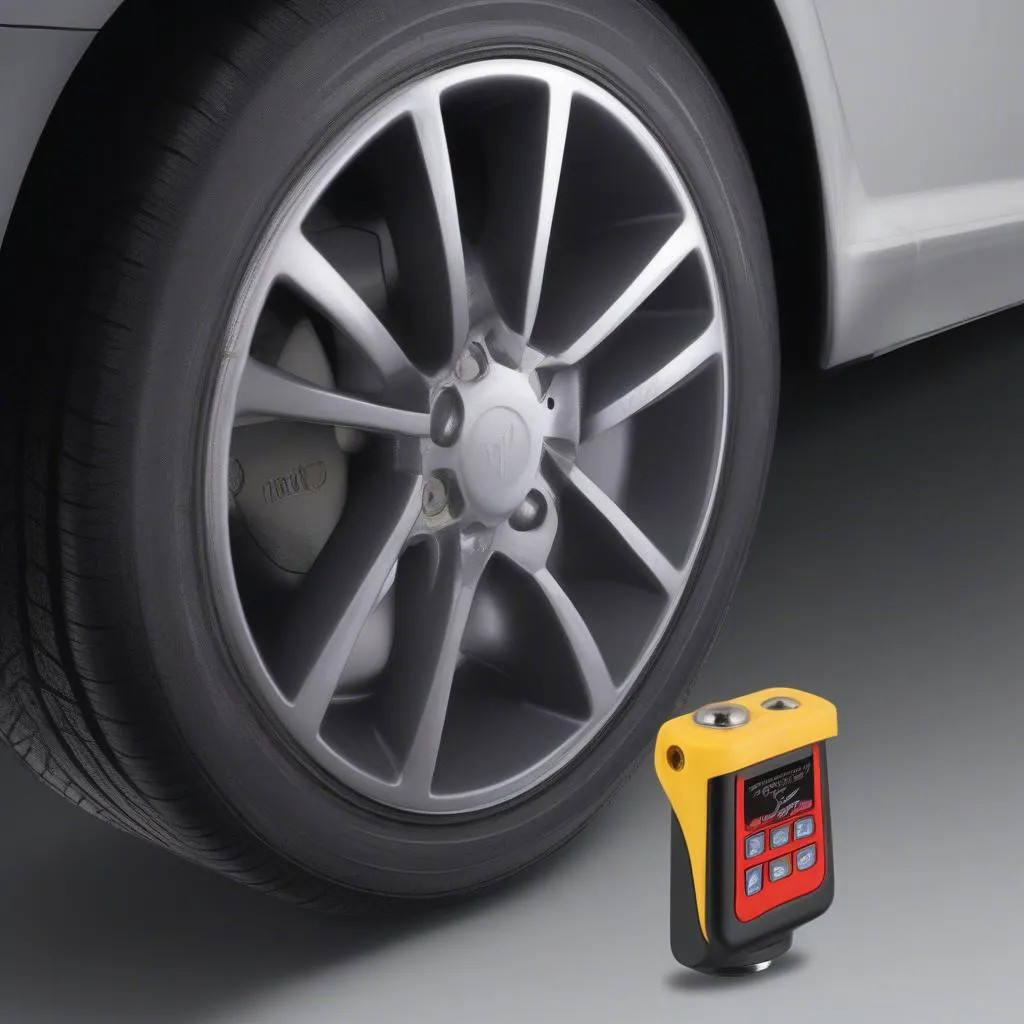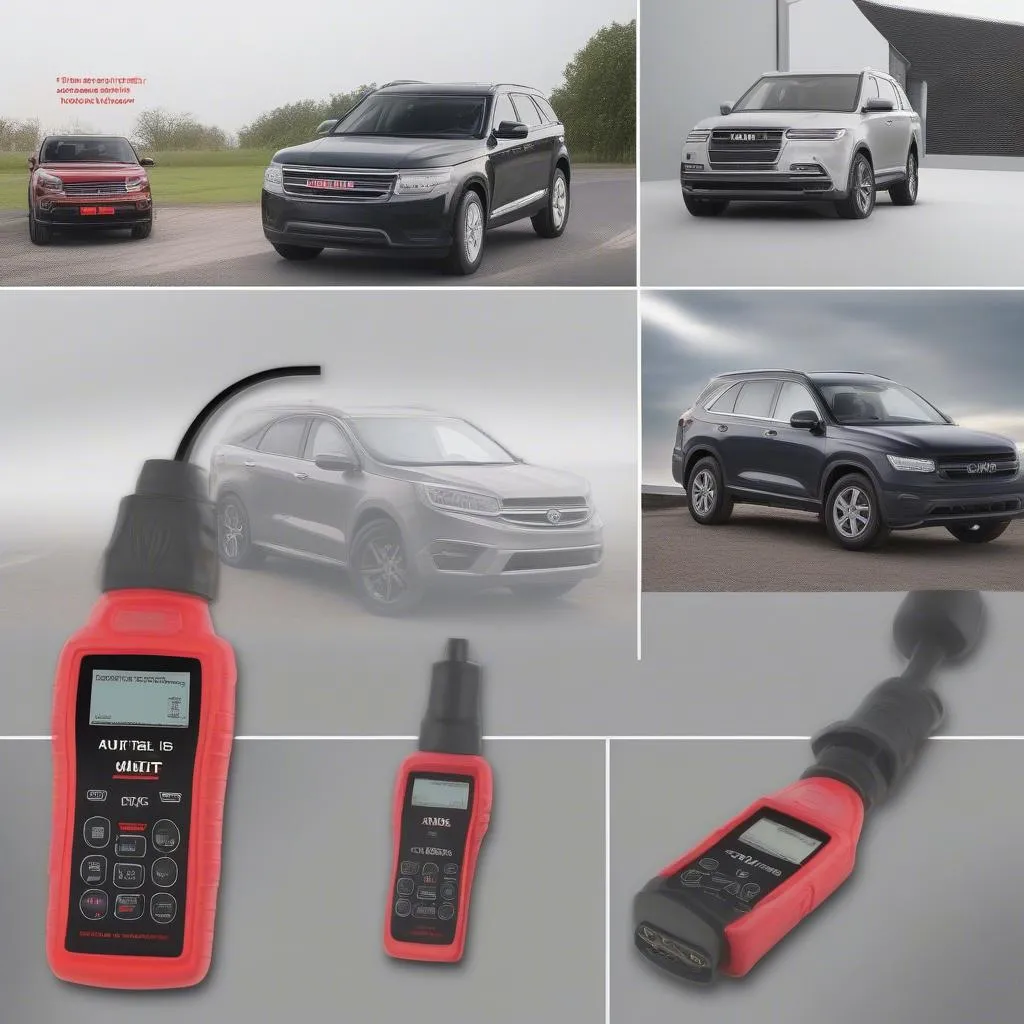Imagine this: You’re driving down the highway, enjoying the open road, when suddenly, your car’s dashboard lights up with a warning: “Tire Pressure Low.” You pull over, check your tires, and find that one of them is significantly deflated. You reach for your trusty tire pressure gauge, but it’s not just the pressure that’s low – it’s the entire system! Your car’s Tire Pressure Monitoring System (TPMS) needs a little TLC.
This is where a tire pressure monitor sensor activation tool comes in handy. This small, yet powerful, device can help you reset your TPMS and get back on the road quickly and safely. In this comprehensive guide, we’ll explore everything you need to know about tire pressure monitor sensor activation tools, including their function, types, and how to use them effectively.
The Importance of TPMS and Why You Need an Activation Tool
The TPMS is a vital safety system in your car. It monitors the air pressure in each tire and alerts you if any tire is significantly underinflated, preventing potentially dangerous situations. A tire pressure monitor sensor activation tool is essential because it allows you to:
- Reset TPMS After Tire Replacement: When you replace a tire, the new sensor needs to be activated and registered with the vehicle’s system. A TPMS activation tool helps to accomplish this.
- Resolve TPMS Malfunctions: In cases where a TPMS sensor fails, the activation tool can help identify and troubleshoot the issue.
- Update TPMS Data: Some TPMS tools allow you to update the system with the latest pressure readings and ensure accurate monitoring.
Types of TPMS Activation Tools
Just like there are different types of cars, there are also different types of TPMS activation tools. Here are some of the most common:
1. OBDII Scanners with TPMS Functionality:
These versatile tools plug into your car’s OBDII port and can perform various diagnostics, including TPMS activation. Some popular OBDII scanners with TPMS functionality include the Autel MaxiCOM MK808 and Launch X431 PRO.
2. Dedicated TPMS Activation Tools:
These tools are specifically designed for TPMS activation and often offer a more streamlined experience. Examples include the Autel MaxiTPMS TS401, Bartec TPMS Tool, and Ateq VT56.
3. Smartphone Apps:
Some TPMS tools connect to your smartphone via Bluetooth and can be used to activate sensors, monitor tire pressure, and more. It’s important to note that the effectiveness of these apps can vary, and not all smartphone apps support all TPMS systems.
How to Use a Tire Pressure Monitor Sensor Activation Tool
Using a TPMS activation tool is relatively straightforward, but the specific steps may vary depending on the type of tool and your vehicle’s TPMS system. Here’s a general guide:
- Locate the TPMS Sensor: Each tire usually has a TPMS sensor installed in the valve stem.
- Power Up the Tool: Connect the tool to the car’s OBDII port (if applicable) or activate the Bluetooth connection to your smartphone.
- Select the Vehicle: Input the vehicle’s year, make, and model into the tool.
- Identify the Sensor: Use the tool to identify the specific TPMS sensor you need to activate.
- Activate the Sensor: Follow the tool’s instructions to initiate the activation process. This may involve pressing a button, entering a specific code, or performing a sequence of actions.
- Confirm Activation: The tool should display a confirmation message when the sensor is successfully activated.
Choosing the Right Tool for Your Needs
The best TPMS activation tool for you will depend on your specific needs and budget. If you’re a professional mechanic or automotive enthusiast, you may want to consider an advanced tool like the Autel MaxiTPMS TS401, which offers a comprehensive range of features and is compatible with a wide variety of vehicles. On the other hand, if you’re a casual driver looking for a simple solution to reset TPMS sensors after a tire change, a basic tool like the Bartec TPMS Tool might be sufficient.
FAQs – What to Do if Your TPMS Sensor Fails?
Q: What if I can’t find the right tool for my car?
A: Don’t worry! You can always seek help from a professional mechanic. They have access to specialized tools and expertise that can handle any TPMS issue.
Q: What if my TPMS sensor is broken?
A: If a TPMS sensor is faulty, it needs to be replaced. Your local tire shop or a mechanic can help you with this.
Q: How often should I check my TPMS sensors?
A: It’s best to check your TPMS sensors at least once a month, especially before long road trips.
Q: Can I activate TPMS sensors without a tool?
A: Some newer vehicles allow you to activate TPMS sensors through the vehicle’s infotainment system. However, for older or less common vehicles, a tool is usually required.
Conclusion: Ensuring Safe Driving with Tire Pressure Monitoring
The TPMS is a vital safety feature that can help prevent accidents caused by underinflated tires. By understanding how to use a TPMS activation tool, you can ensure your TPMS system is functioning properly and keep your car safe.
Have any further questions about tire pressure monitor sensors? Let us know in the comments below!
 tire-pressure-monitoring-system-sensor
tire-pressure-monitoring-system-sensor
 autel-tpms-tool
autel-tpms-tool
 tpms-activation-tool
tpms-activation-tool
Need help with diagnostics tools or TPMS activation? Get in touch with our expert team at Whatsapp: +84767531508. We provide 24/7 support for all your automotive needs.